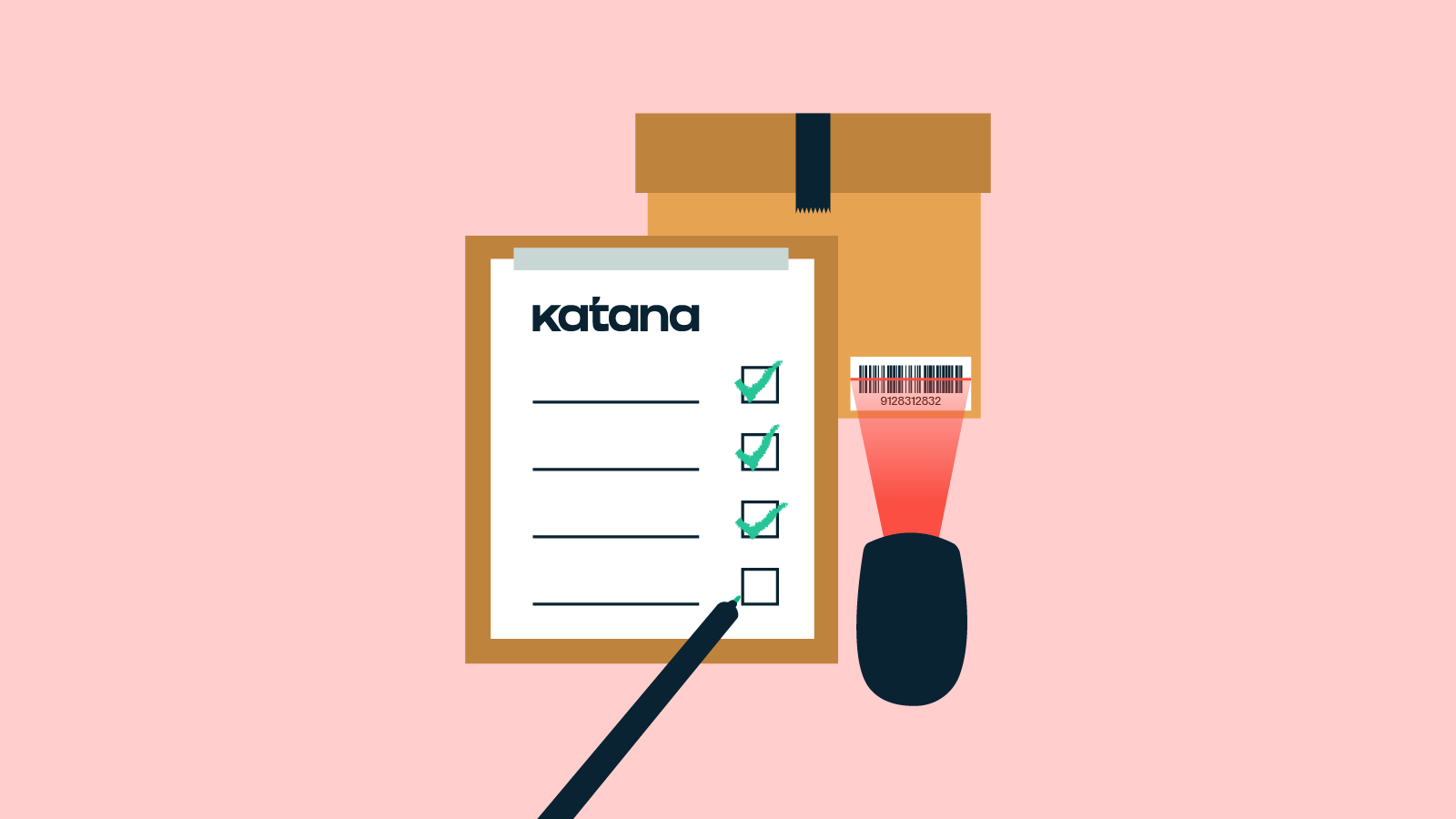Everything you need to know about inventory count
Every business dealing with inventory needs to conduct inventory counts. This article will explore different ways of doing that and provides tips and tricks to make it as effortless as possible.

Henry Kivimaa

In an ideal world, the number of items shown on your inventory management software and warehouse would match exactly. But since we don’t live in an ideal world, you’ll often find discrepancies between these values. Whether it’s due to items getting lost, stolen, or damaged, differences are bound to happen and can lead to costly errors.
To ensure that your inventory records are correct, it’s important to periodically take physical inventory counts. This article provides guidance on counting inventory, including the best inventory counting methods to use and a step-by-step guide.
But before we dive into the details of how to do an inventory count, let’s first explore what exactly an inventory count entails.
What is an inventory count?
An inventory count, also known as a physical inventory or stocktake, is the process of manually counting and verifying the number of goods and materials a business has in its stock at a specific time. This process is typically done to ensure the accuracy of the inventory records and to identify any discrepancies.
By conducting an inventory count, businesses can assess their current inventory levels and identify any potential issues or areas for improvement, such as overstocked or understocked items, inventory shrinkage, or inaccuracies in their inventory management processes.
4 types of inventory
Let’s briefly review the 4 types of inventory a manufacturing business deals with:
- Raw materials — The materials used to create a product, such as wood, steel, or plastic
- Work-in-process (WIP) — Inventory in the process of being transformed into a finished product but is not yet complete
- Finished goods — Completed products ready to be sold or used
- Maintenance, repair, and operating (MRO) inventory — Materials and supplies necessary to keep a manufacturing facility running, such as tools, spare parts, and cleaning supplies
What are the 4 types of inventory counts?
There are several different types of counts that businesses can use, depending on their specific needs and circumstances. Let’s go over the four most common ones.
Cycle count
This is an ongoing process of counting a small portion of the inventory regularly, usually daily or weekly. Cycle counting aims to identify discrepancies and correct them promptly rather than waiting for a full physical inventory.
Random sampling or spot counting
This involves randomly selecting a subset of inventory items for counting. The sample size and items to be counted are determined based on statistical methods to obtain an accurate estimate of the total inventory levels.
Perpetual count
A perpetual inventory system is an ongoing process of continuously updating the inventory records as inventory transactions occur, such as sales, purchases, or adjustments. This allows for a more accurate and up-to-date inventory count.
Physical inventory
This involves counting all inventory items at a specific point in time, usually at the end of a fiscal period or year. A physical inventory provides a comprehensive and accurate picture of the inventory levels but can be time-consuming and disruptive to business operations.
Download the ultimate guide to inventory management
A comprehensive ebook with everything you need to know about inventory management.
Step-by-step instructions for a physical inventory count
Taking a physical count of inventory may seem very straightforward — you start counting from one end and finish once you get to the other. However, in reality, a lot can go wrong, especially when dealing with a large number of items, so it’s best to have a plan in place.
Here are step-by-step instructions for conducting a physical inventory count:
- Plan the count — Determine the scope of the count, including the specific items, locations, and employees involved. Set a date and time for it and inform all employees involved.
- Prepare the area — Clear the area of any unnecessary items and ensure that all inventory items are accessible and properly labeled. Make sure that all necessary equipment, such as clipboards, pens, and barcode scanners, are available.
- Assign roles — Assign specific roles and responsibilities to each employee involved. This could include counting, recording, verifying, and reconciling inventory levels.
- Count the inventory — Start counting the inventory items, either by hand or using automated equipment such as barcode scanners. Record the counts on a pre-prepared sheet, noting the location and quantity of each item.
- Verify the count — After completing the inventory count, verify the accuracy of the counts by re-checking the count sheets and physically verifying the inventory levels of a sample of items.
- Reconcile discrepancies — If there are any discrepancies between the physical inventory count and the inventory records, investigate and resolve them. This could involve examining the cause of the difference, such as theft or misplacement of items, and adjusting the inventory records accordingly.
- Report the results — Once the count is complete and any discrepancies are reconciled, prepare a final inventory count report. This report should include a summary of the inventory levels, any discrepancies found, and any necessary adjustments to the inventory records.
- Analyze the results — Analyze the count results to identify any areas for improvement in the inventory management process, such as overstocked or understocked items or inaccuracies in the inventory records.
By following these steps, businesses can conduct a thorough and accurate physical inventory count and identify any potential issues or areas for improvement in their inventory management processes.
Challenges with inventory counting

Inventory counting can present several challenges to businesses, so it’s important to be prepared for them before starting. Let’s go over the most common challenges:
- Time constraints — Conducting a physical inventory can be time-consuming and disrupt business operations. Plan ahead and schedule the count during a less busy period, such as after hours or a weekend.
- Inaccuracies — Human errors in counting, recording, or transcribing inventory data can lead to inaccuracies. Take advantage of technology such as barcode scanners, inventory management software, or RFID systems to automate the inventory counting process and reduce errors.
- Discrepancies — Discrepancies between the physical inventory count and the inventory records can occur due to theft, damage, or misplacement of inventory items. Implement a cycle counting program to regularly monitor inventory levels and address any discrepancies as they occur.
- Staffing — Inventory counting requires trained staff, which can be challenging for small businesses or those with limited resources. One option is to outsource the counting to a third-party service provider or use temporary staff during peak periods.
- Coordination — Coordinating the inventory count across multiple locations or departments can be challenging. You can overcome this by establishing a clear communication plan, assigning roles and responsibilities, and using a standardized inventory counting procedure across all locations or departments.
By identifying these challenges and implementing strategies to overcome them, businesses can improve the accuracy and efficiency of their inventory counting processes.
Katana: The sharpest tool in the shed for stocktakes

Katana is a powerful cloud inventory platform that can help you streamline your inventory management process, including stocktakes. With its intuitive interface and advanced features, Katana makes it easy to keep track of your inventory levels, schedule stocktakes, and reconcile any discrepancies.
One of the key benefits of using Katana for stocktakes is its real-time inventory tracking. Instead of relying on manual counts or periodic updates, Katana provides you with up-to-date information on your inventory levels at all times. This allows you to schedule stocktakes proactively rather than react to discrepancies afterward.
Katana also provides detailed reports and analytics on your inventory levels, including stock levels, reorder points, and lead times. This helps you identify potential inventory issues before they become a problem and make informed decisions about your inventory management strategy.
In addition, Katana offers a range of advanced features to simplify your stocktaking process, including:
- Barcode scanning
- Batch tracking
- Inventory adjustments
- Seamless integrations
These features make it easy to identify and reconcile discrepancies so you can return to running your business.
By using Katana to manage your inventory and streamline your stocktaking process, you can save time, reduce errors, and focus on growing your business. Reach out to our sales team today to request a demo and see how Katana can improve your business operations.

Henry Kivimaa
Table of contents
Get inventory trends, news, and tips every month
Get visibility over your sales and stock
Wave goodbye to uncertainty by using Katana Cloud Inventory for total inventory control
